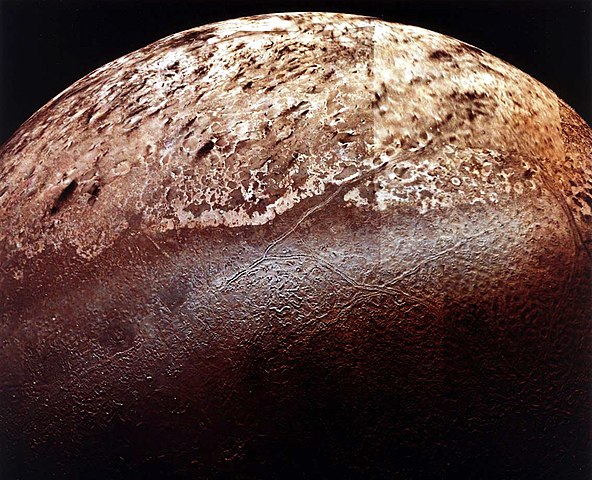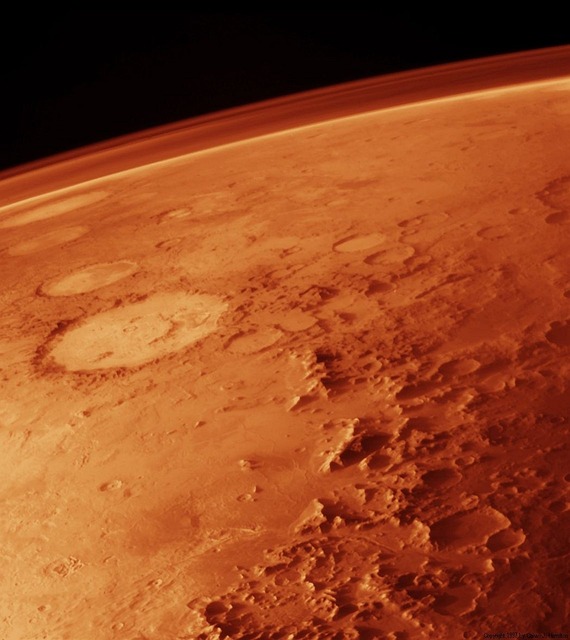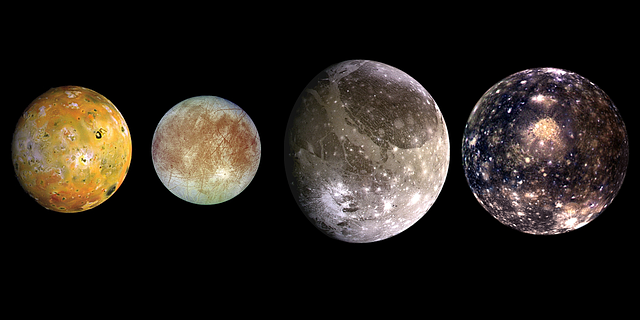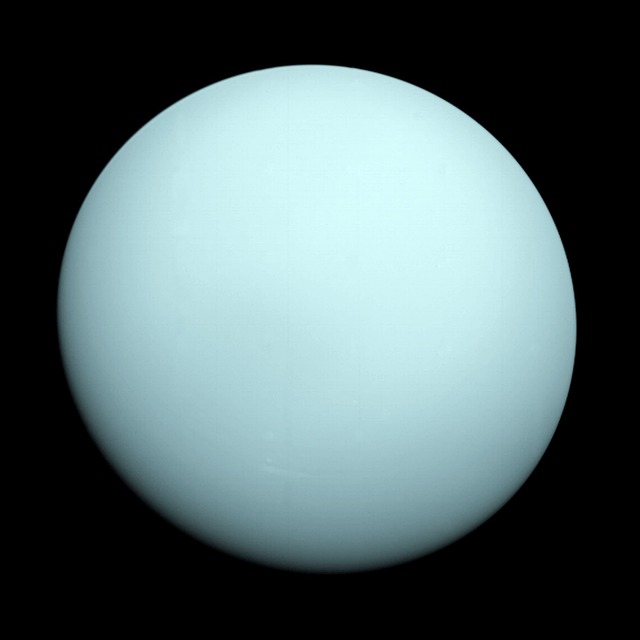Welcome to the magnificent world of Saturn, a planet that has captivated the human imagination for centuries. Its alluring rings and intriguing features have sparked curiosity and fascination, making it one of the most studied and beloved planets in our solar system. As we continue to explore and learn more about Saturn, we uncover more of its beauty and mystery, further fueling our fascination.
In this comprehensive guide, we will delve into the history, physical characteristics, exploration, composition, and future of Saturn, providing you with a complete understanding of this remarkable planet. From ancient mythology to modern scientific advancements, we will cover everything you need to know about Saturn, giving you a deeper appreciation for its unique beauty and significance.
So join us on this cosmic journey as we explore the beauty of Saturn and uncover its secrets. Whether you’re a space enthusiast or simply curious about this magnificent planet, this guide is for you.
History of Saturn
Saturn has been a source of fascination and mystery for centuries, captivating our imaginations with its unique appearance and position in our solar system. It has been a constant source of wonder and curiosity, with ancient civilizations attributing godly powers and mythological stories to this gas giant. In this section, we will delve into the history of Saturn, from early observations and beliefs to modern scientific advancements in understanding this enigmatic planet.

Early Observations and Discoveries:
Saturn has been visible to the naked eye since ancient times, with the first recorded observations dating back to the Babylonians in the 8th century BC. They referred to Saturn as “star of Ninib” and believed it to be a deity associated with agriculture and abundance. The ancient Greeks also observed and named the planet, calling it “Phainon,” meaning shiny or luminous. It wasn’t until the 17th century that the Dutch astronomer, Christiaan Huygens, discovered Saturn’s rings, which had been previously mistaken for “ears” or “handles” on either side of the planet.
Significance in Ancient Mythology and Beliefs:
Saturn’s unique appearance and movements in the sky have inspired many myths and beliefs throughout history. In ancient Roman mythology, Saturn was known as the god of agriculture, wealth, and time. The name “Saturn” itself comes from the Roman god’s name, and many ancient civilizations associated it with harvest and abundance.
Modern Scientific Advancements:
With the invention of telescopes, scientists were able to make more detailed observations of Saturn and its rings. In the 19th century, William Herschel discovered two of Saturn’s moons, Mimas and Enceladus, and later discovered two more, Tethys and Dione. In the 20th century, the Voyager 1 and 2 spacecrafts provided detailed images of Saturn and its moons, revealing new information about its composition and structure.
Size, Shape, and Distance from the Sun:
Saturn is the sixth planet from the Sun and the second-largest in our solar system, with a diameter of about 116,000 km. It is also the least dense planet, consisting mostly of gas and small amounts of ice. Its iconic appearance is due to its distinct ring system, which extends outward from its equator. Saturn is also known for its unique hexagonal shape at its north pole, which is caused by its atmospheric winds.
Unique Rings of Saturn:
Saturn’s rings are undoubtedly its most distinctive feature, consisting of countless small particles of ice and rock. These rings are made up of seven main rings, labeled alphabetically, with gaps in between, known as divisions. These rings are believed to have formed from debris left behind by comets or moons that collided with Saturn’s surface.
Other Notable Features:
In addition to its rings, Saturn is also known for its massive and persistent storms, including the famous “Great White Spot.” These storms can last for weeks, sometimes even months, and can be seen from Earth through powerful telescopes. Saturn is also home to 82 known moons, with the largest, Titan, being larger than the planet Mercury.
In conclusion, the history of Saturn is a testament to our constant fascination and curiosity about the mysteries of our universe. From early beliefs and observations to modern scientific advancements, we continue to uncover the secrets of this beautiful and enigmatic planet. In the next section, we will explore the physical characteristics of Saturn in more detail.
Physical Characteristics of Saturn
Saturn is the sixth planet from the sun and the second-largest planet in our solar system. It is known for its beautiful and distinct feature, the rings, which have fascinated astronomers and the public for centuries. But Saturn is much more than just its rings, it has many other physical characteristics that make it a unique and breathtaking planet.
Size, Shape, and Distance from the Sun:
Saturn has a diameter of approximately 116,464 kilometers, making it the second-largest planet in our solar system after Jupiter. Its shape is slightly flattened at the poles due to its rapid rotation, which causes the equator to bulge out. This gives Saturn an oblate spheroid shape, similar to a flattened ball.
Saturn is also known for its large distance from the sun, with an average distance of approximately 1.4 billion kilometers. This means that it takes around 29 Earth years for Saturn to complete one orbit around the sun. Due to its distance, Saturn is a very cold planet, with average temperatures of -178 degrees Celsius.
The Unique Rings of Saturn:
The most well-known feature of Saturn is its rings, which are made up of countless small particles of ice and rock. These rings are made up of seven main groups, labeled with letters of the alphabet, with the most prominent being the A, B, and C rings. The rings are believed to have formed from debris left over from comets, asteroids, and moons that were captured by Saturn’s gravity.
One of the most fascinating aspects of Saturn’s rings is their changing appearance. As Saturn orbits the sun, the angle of the rings in relation to the Earth changes, making them appear thicker or thinner. This phenomenon is known as “ring plane crossing” and occurs every 15 years.
Other Notable Features:
In addition to its rings, Saturn also has other notable features that contribute to its beauty and uniqueness. One of these features is its storms, particularly the Great White Spot, which is a massive storm that occurs approximately every 30 years and can last for months. Fun fact: The Great White Spot is so large that it could fit two Earths inside of it!
Saturn also has a large number of moons, with 82 known moons and counting. Some of these moons, such as Enceladus and Titan, have their own unique characteristics and have been explored by spacecraft. We will discuss more about Saturn’s moons in the next section.
In conclusion, Saturn’s physical characteristics are truly remarkable and contribute to its overall beauty and fascination. From its size and shape to its iconic rings and ever-changing storms, Saturn is a planet that continues to captivate and amaze us.
Exploration of Saturn
Since ancient times, humans have been fascinated by the beauty and mystery of Saturn. With its striking rings and unique features, it has captured the imagination of people and has been a subject of study for centuries. In this section, we will delve into the exploration of Saturn, discussing notable missions and probes, their findings, and the significance of these explorations in our understanding of this planet.
Notable Space Missions and Probes:
The first notable mission to explore Saturn was the Pioneer 11 spacecraft in 1979. It provided the first close-up images of Saturn and its moons, giving scientists a better understanding of its physical characteristics. This was followed by the historic Voyager 1 and 2 missions in 1980 and 1981, respectively, which provided stunning images and data about Saturn’s rings and moons.
In 1997, NASA’s Cassini spacecraft was launched, marking the most comprehensive and in-depth exploration of Saturn to date. It arrived at Saturn in 2004 and spent 13 years studying the planet and its moons before its final plunge into Saturn’s atmosphere in 2017. The Cassini mission not only provided breathtaking images, but it also made groundbreaking discoveries and advancements in our understanding of Saturn.
Findings and Discoveries:
One of the most significant findings of the Cassini mission was the discovery of liquid water on Saturn’s moon Enceladus, making it a potential habitat for extraterrestrial life. The mission also revealed the unique hexagonal shape of Saturn’s north pole, which is caused by a giant hurricane-like storm. Additionally, the Cassini spacecraft studied Saturn’s atmosphere and its complex weather patterns, giving insight into the planet’s climate.
Furthermore, the mission provided a detailed map of Saturn’s moons, revealing their diverse characteristics and features. The images captured by the Cassini spacecraft also enabled scientists to study the composition of Saturn’s rings and their dynamics, leading to a better understanding of how they were formed.
Significance of Exploration:
The exploration of Saturn has been crucial in advancing our understanding of this planet and its place in our solar system. With each mission, we have gained valuable information about its composition, physical characteristics, and moons, allowing us to piece together the puzzle of Saturn’s formation and evolution.
Moreover, the discoveries made by these missions have also shed light on the formation and evolution of other gas giants in our solar system, providing a deeper understanding of planetary systems as a whole. The continued exploration of Saturn will undoubtedly lead to further discoveries, making it an essential area of study for scientists and researchers.
In conclusion, the exploration of Saturn has been a fascinating and ongoing journey, providing us with a wealth of knowledge and insight into this beautiful and mysterious planet. With future missions planned, we can expect to uncover even more secrets and continue to be amazed by the wonders of Saturn.
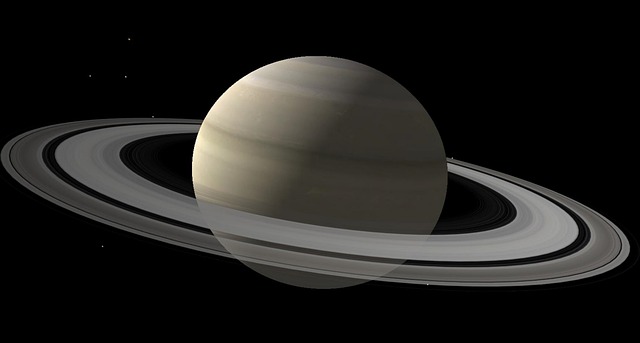
Composition and Atmosphere
Saturn, the sixth planet from the sun, is known as the “Jewel of the Solar System” due to its beautiful and unique appearance. It is the second-largest planet in our solar system, with a diameter of approximately 116,464 kilometers, about nine times the size of Earth. But what makes Saturn truly fascinating is its composition and atmosphere, which sets it apart from other planets in our solar system.
The atmosphere of Saturn is primarily composed of hydrogen (75%) and helium (25%). This composition is similar to that of Jupiter, the largest planet in our solar system. However, what makes Saturn’s atmosphere stand out is its beautiful and distinct colors. The upper atmosphere of Saturn has bands of different colors, including shades of yellow, gold, and beige. These colors are caused by different gases in the atmosphere, such as ammonia and sulfur compounds, reacting to the sun’s ultraviolet light.
At the center of Saturn, there is a dense, rocky core, surrounded by a layer of liquid metallic hydrogen. This layer is estimated to be about 20,000 kilometers thick and is responsible for generating Saturn’s powerful magnetic field. This magnetic field is about 578 times stronger than Earth’s and plays a crucial role in trapping charged particles from the sun, creating the auroras seen near Saturn’s poles.
Saturn also has a unique feature that sets it apart from all other planets in our solar system – its iconic rings. These rings are made up of countless small particles of ice, dust, and rock, ranging in size from tiny grains to large boulders. The composition of these rings is still a mystery, but scientists believe they may have formed from the debris of a shattered moon or captured asteroids.
The rings of Saturn are divided into several sections, with the most prominent being the A, B, and C rings. The A and B rings are the brightest and most massive, while the C ring is thinner and more diffuse. These rings are constantly changing, with new particles being added and removed over time. The beautiful and intricate patterns of Saturn’s rings have fascinated scientists and astronomers for centuries and continue to be a subject of study and research.
Apart from its rings, Saturn is also known for its numerous moons, numbering at least 82 to date. These moons vary in size, with the largest being Titan, which is even bigger than the planet Mercury. Titan is of particular interest to scientists as it is one of the few places in our solar system with a dense atmosphere, similar to that of Earth. It also has liquid methane and ethane lakes on its surface, making it a potential candidate for future exploration and even colonization.
In conclusion, the composition and atmosphere of Saturn make it a unique and intriguing planet to study. Its colorful atmosphere, powerful magnetic field, iconic rings, and numerous moons continue to fascinate scientists and inspire future space exploration missions. As we continue to uncover the mysteries of Saturn, we may gain a better understanding of our own planet and the formation of our solar system.
Rings of Saturn
Saturn is famously known for its iconic rings, which make it stand out among all the planets in our solar system. These rings have captured the imagination of humans for centuries, and have been a source of fascination and wonder. In this section, we will explore the composition, structure, and significance of Saturn’s rings.
Composition and Structure:
Saturn’s rings are primarily composed of ice and dust particles, with some particles as small as grains of sand and others as large as houses. These particles are constantly colliding with each other, creating a stunning display of rings surrounding the planet. The rings are divided into three main sections: the A ring, B ring, and C ring, with small gaps in between.
The A and B rings are the brightest and most prominent, while the C ring is thinner and less defined. Scientists believe that the A and B rings are made mostly of water ice, while the C ring is a mixture of ice and dust. The reason for the different compositions of the rings is still a topic of study and debate among scientists.
Origin of the Rings:
One of the most significant questions about Saturn’s rings is how they were formed. There are several theories, but the most widely accepted one is the “Roche limit” theory. This theory suggests that the rings were formed when a moon or comet came too close to Saturn, and tidal forces pulled it apart, creating the rings.
Another theory proposes that the rings were formed from the debris of a moon that was destroyed by a collision with another object. Some scientists also believe that the rings are remnants of the material that was present when Saturn was formed. The true origin of the rings is still a mystery, and further research and exploration are needed to uncover the truth.
Significance of Saturn’s Rings:
Aside from being a stunning sight, Saturn’s rings also play a crucial role in our understanding of planetary formation. They provide valuable insights into the processes that shaped our solar system. The rings also act as a natural laboratory for studying the dynamics of particles in space, which can have implications for other planets and systems.
Furthermore, the rings of Saturn have influenced many scientific discoveries, such as the gap in the rings known as the “Cassini division,” which helped astronomers calculate the mass of Saturn’s moons. The rings also provide invaluable information about Saturn’s magnetic field and its interactions with the particles in space.
Future Exploration:
Although we have learned a lot about Saturn’s rings through various space missions, there is still much to discover. The Cassini spacecraft, which explored Saturn for over 13 years, provided a wealth of data and images of the planet’s rings. However, there are plans for future missions that will further our understanding of this enigmatic planet.
One such mission is NASA’s “Dragonfly” mission, which will send a drone-like spacecraft to explore the surface of Titan, one of Saturn’s moons. This mission will also provide valuable insights into the role of the rings in shaping the moons of Saturn. With the advancements in technology and the continuous efforts of scientists, there is no doubt that we will continue to uncover the mysteries of Saturn’s rings in the future.
In conclusion, the rings of Saturn are a remarkable feature that sets this planet apart from all others. These rings have captured our imagination and continue to provide valuable insights into the formation and dynamics of our solar system. As we continue to explore and study Saturn, we will undoubtedly learn more about these beautiful and mysterious rings.
Moons of Saturn
Saturn is known for its stunning and distinctive rings, but it also has an impressive collection of moons. With over 80 confirmed moons, Saturn has the most extensive moon system in our solar system. These moons range in size, shape, and composition, and each one holds valuable information about Saturn’s past and present.
The number and diversity of Saturn’s moons have fascinated astronomers and space enthusiasts for centuries. The first moon of Saturn, Titan, was discovered by Christiaan Huygens in 1655. However, it wasn’t until recent space missions and probes that we gained a deeper understanding of these celestial bodies.
The moons of Saturn are divided into three main groups, based on their distance from the planet: the inner group, the mid-sized group, and the outer group. Each group contains unique moons with their own characteristics and features.
Inner Group:
The inner group of Saturn’s moons consists of seven small and irregularly shaped moons: Pan, Daphnis, Atlas, Prometheus, Pandora, Epimetheus, and Janus. These moons orbit closely to Saturn and are thought to be captured asteroids or fragments of larger moons that broke apart.
Mid-Sized Group:
The mid-sized group of Saturn’s moons includes 24 moons, ranging in size from 300 to 1,500 km in diameter. This group contains some of Saturn’s most well-known moons, such as Enceladus, Mimas, Tethys, and Dione. These moons are mostly composed of ice and have heavily cratered surfaces, with some displaying signs of geological activity.
Outer Group:
The outer group of Saturn’s moons consists of the largest and most distant moons, with diameters ranging from 1,500 to 5,000 km. This group includes Titan, Saturn’s largest moon, and Hyperion, known for its irregular shape and chaotic rotation. These moons are thought to have formed from the debris left behind after the formation of Saturn’s rings.
One of the most intriguing moons of Saturn is Titan. It is the only moon in our solar system with a dense atmosphere, primarily composed of nitrogen. Titan’s atmosphere also contains methane, which gives the moon its distinctive orange haze. In 2005, the Cassini-Huygens mission landed a probe on the surface of Titan, providing valuable data and images of its surface.
Another notable moon of Saturn is Enceladus. This small, icy moon has a geologically active surface, with plumes of water vapor and ice erupting from its south pole. These plumes contain organic molecules, suggesting the potential for life on this moon.
The diversity of Saturn’s moons and their unique features provide valuable insights into the planet’s history and composition. They also serve as potential targets for future exploration and study.
Despite the impressive number of moons that have been discovered, there is still much to learn about Saturn’s moon system. Future missions, such as the upcoming Dragonfly mission, will continue to explore these moons and uncover more secrets and mysteries.
In conclusion, the moons of Saturn are a crucial element in our understanding of this magnificent planet. From the inner group of small and irregularly shaped moons to the distant and massive outer moons, each one holds valuable information and provides a glimpse into the beauty and complexity of Saturn’s system. As we continue to explore and study these moons, we can only imagine the new discoveries and advancements that await us.
The Future of Exploration
As our understanding of Saturn continues to evolve, scientists and space agencies are eagerly planning for and launching new missions to further explore this mysterious planet. With each new mission, we uncover more secrets and gain a deeper understanding of the beauty and complexity of Saturn.
Currently, there are several missions in progress or planned for Saturn. One of the most exciting is the Cassini-Huygens mission, a collaboration between NASA, the European Space Agency, and the Italian Space Agency. This mission, which began in 1997 and ended in 2017, has provided invaluable information about Saturn and its moons. The spacecraft studied the planet’s rings, atmosphere, and moons, including making the first-ever landing on Titan, Saturn’s largest moon. The mission also discovered geysers on Enceladus, another of Saturn’s moons, providing evidence of a subsurface ocean.
But the exploration of Saturn is far from over. In 2021, NASA is set to launch the Europa Clipper mission, which will study the potential habitability of Jupiter’s moon, Europa. While not directly exploring Saturn, this mission will use the planet’s gravity for gravity assists, allowing for a more efficient journey to Europa.
Another exciting mission planned for Saturn is the Dragonfly mission, set to launch in 2026. This mission will send a drone-like spacecraft to explore Saturn’s largest moon, Titan, in a way that has never been done before. The spacecraft will fly to different locations on Titan’s surface, studying its atmosphere and composition, and potentially searching for signs of past or present life.
In addition to these planned missions, there are also ongoing efforts to study Saturn remotely. The Hubble Space Telescope and the W. M. Keck Observatory in Hawaii are continuously observing Saturn and its moons, providing valuable data for scientists.
The future of Saturn exploration is brimming with possibilities and potential discoveries. With each mission, we uncover more mysteries and gain a deeper understanding of this beautiful and enigmatic planet.
One of the primary goals of future missions to Saturn is to further explore its moons, specifically Titan and Enceladus. These moons have been found to have potential for hosting life, and further exploration could provide more evidence and insights into their habitability. Additionally, studying the composition and geology of these moons could help us understand the history and formation of Saturn itself.
Another focus of future missions is to study Saturn’s unique rings. While we have learned a lot about these rings through past missions, there is still much to uncover. We hope to gain a better understanding of their structure, formation, and potential for future changes.
The future of Saturn exploration also holds the potential for new technological advancements. As we continue to develop new tools and techniques, we may be able to study Saturn and its moons in even greater detail. This could lead to groundbreaking discoveries and advancements in our understanding of the universe.
In conclusion, Saturn remains a fascinating and mysterious planet, and the future of its exploration is full of promise. With ongoing and planned missions, we will continue to uncover its secrets and deepen our understanding of this beautiful and complex world. The exploration of Saturn is a testament to human curiosity and the unrelenting pursuit of knowledge, and it will undoubtedly yield many more discoveries and wonders in the years to come.






